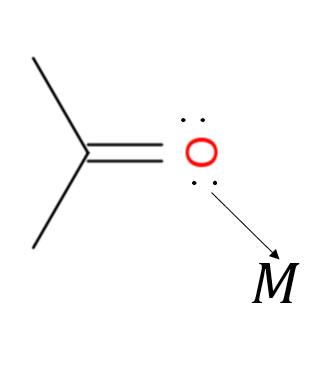I have never seen any Carbonyl Oxygen acting as a ligand. But a naive intution says that since carbonyl oxygen has two lone pairs, it should act as a donor atom, donating one of its lone pairs as shown below:
In general can aldehydes and ketones act as a monodentate ligand? If no, then what's the reason?



